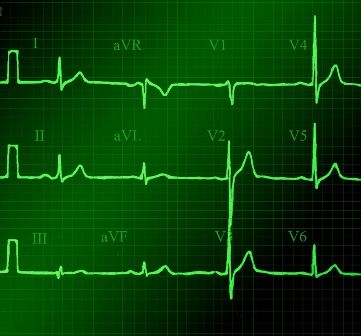Adding electrocardiography screening to standard cardiovascular disease assessment is not necessary for asymptomatic, low-risk adults, according to final recommendations from the U.S. Preventive Services Task Force.
In the statement published June 12 in JAMA, the USPSTF gave a D recommendation against using ECG screening to evaluate cardiovascular disease risk in asymptomatic, low-risk individuals and issued a statement that current evidence is inadequate (I statement) to evaluate the harms versus benefits of additional ECG for asymptomatic individuals who may be at medium to high risk for future cardiovascular events.
The recommendation against screening ECG applies to adults with no CVD symptoms or CVD diagnosis, wrote lead author Susan J. Curry, PhD, of the University of Iowa, Iowa City, and her colleagues.The Task Force concluded that the potential harms of screening ECG outweigh or equal potential benefits in the asymptomatic low-risk population. However, they noted clinical considerations for screening in moderate to high-risk individuals including the potential for more intensive medical management in those identified as higher risk after an ECG, balanced by the potential for harms from medication side effects or follow-up procedures.
Treatment for asymptomatic adults at increased risk for CVD may include lipid-lowering medications, tobacco cessation, and lifestyle modifications regarding diet and exercise, according to the Task Force, and guidelines already exist for many of these factors.
ECG screening could reclassify individuals as higher or lower risk, which could potentially improve health outcomes, wrote Daniel E. Jonas, MD, of the University of North Carolina, Chapel Hill, and his colleagues in the evidence report accompanying the recommendations. The researchers reviewed data from 16 studies including 77,140 individuals. However, the strength of evidence was low for the value of ECG to reclassify individuals, and no improvements in health outcomes were noted, even in high-risk populations such as diabetes patients, the researchers said.
In particular, no significant improvement from additional exercise ECG occurred in a pair of randomized controlled trials including 1,151 individuals, they noted.
The final recommendation reflects the 2017 draft statement and the 2012 final recommendation statement. The full recommendation statement is available online in JAMA and on the Task Force website.
The research was funded by the Agency for Healthcare Research and Quality under a grant from the U.S. Department of Health and Human Services. The researchers had no financial conflicts to disclose.
SOURCES: Jonas D et al. JAMA. 2018 Jun 12;319(22):2315-28; Curry S et al. JAMA. 2018 Jun 12;319(22):2308-14.


